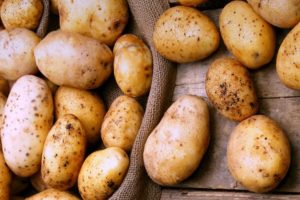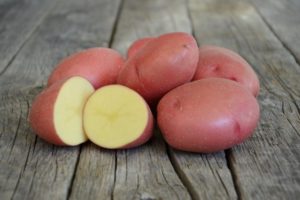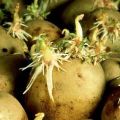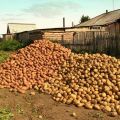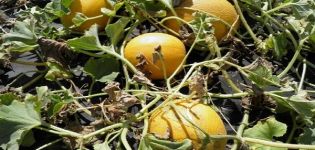Description of the potato variety Kolobok, features of cultivation and care
Even in the recent past, yellow potatoes were considered fodder, but today they are in no way inferior to white varieties. Potatoes Kolobok are popular in cooking due to their ideal shape and nutritional value. It contains the necessary trace elements, vitamins, a large amount of protein. The variety is characterized by disease resistance and, accordingly, high yields.
Description of the variety
Potato Kolobok bred by Russian breeders. It is a mid-season cultivar that has been actively cultivated and used in cooking since 2005. The interval between planting and harvesting is 80–85 days. Kolobok potatoes are used in all variations of the industry: making chips and dry mashed potatoes, freezing, selling fresh root vegetables. Under the right conditions, root crops can be stored for a very long time.
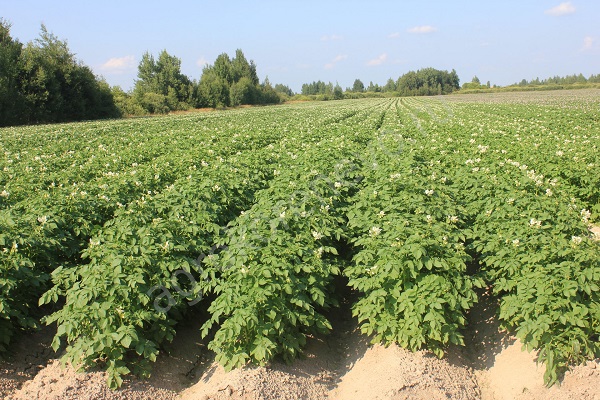
A distinctive characteristic of the Kolobok variety is the non-degeneracy of tubers. This means that potatoes are suitable for planting for a long time, without the slightest fear of a decrease in yield.
The potato is characterized by a tall bush, spreading branches with medium leaf sizes, white inflorescences. In a healthy bush, an average of 12 tubers are formed. There are almost no small fruits in the holes. Moreover, they have a dense, rough skin, so that when harvesting mechanically, you can not worry about damage to the tuber.
Brief characteristics of root crops:
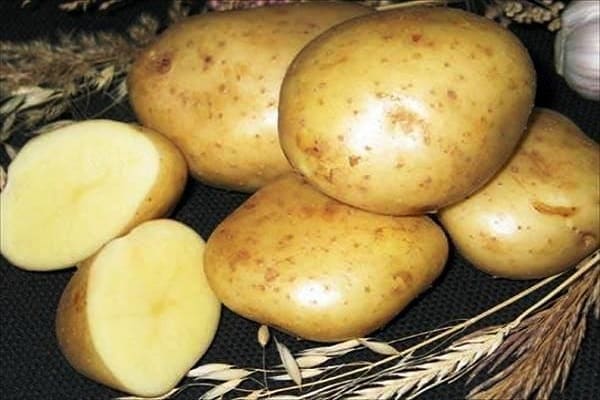
- medium size, weight up to 140 grams;
- small eyes;
- rounded shape;
- the pulp of the root vegetable is light yellow;
- starch content - 11-13%;
- tubers are even, without depressions and dents.
Due to the low concentration of starch in the roots, they do not boil over and do not darken during cooking. They retain their creamy color and shape. Various dishes can be prepared from this variety: baked potatoes, deep-fried, stuffed, boiled.
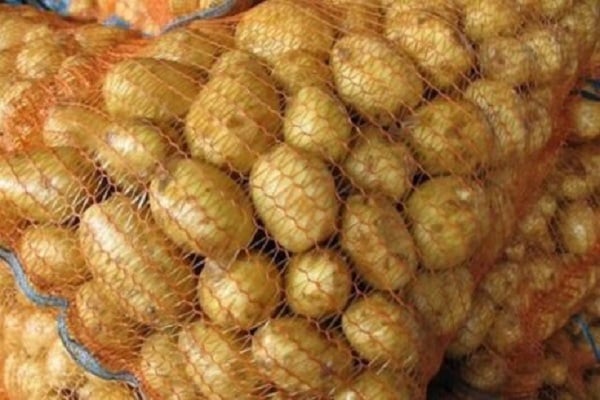
Planting
If you periodically change the landing site, potato yield will be consistently high. It is ideal to plant potatoes after these crops:
- herbs (annual and perennial);
- radish;
- legumes;
- cabbage.
The potato variety Kolobok adapts to all types of soil, but a light sand-based soil is optimal.
To prepare a site for planting, you should dig deeply into the soil in the fall and add organic substances to it. In spring, the soil is cultivated and fertilized with potash-phosphorus fertilizers. When planting, the rows of plants are arranged in the direction from north to south, this will ensure the penetration of the maximum amount of light into them. If groundwater occurs near the planting site, it is recommended to plant potatoes on ridges or ridges.
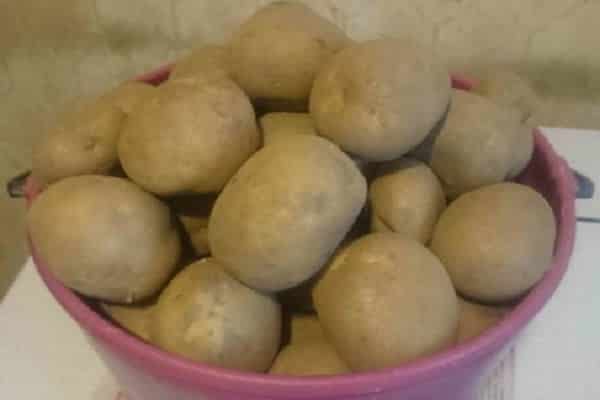
Root crops are planted no earlier than May, at a soil temperature of at least 8 degrees. They are pickled in advance and left to germinate in a warm and bright place, so that at the time of planting they have enough moisture for growth and vegetation.
It is necessary to plant only tubers with strong sprouts, the length of which is 2-3 centimeters. To accelerate the growth of potatoes, the tubers are treated with Kurzat or Albit.
Root crops are planted to a depth of about 10 centimeters, in parallel, a handful of wood ash and rotted manure are added to the hole. The optimal distance between the planting holes is 30 centimeters, and the width between the rows is 60 centimeters. This will make harvesting much easier.
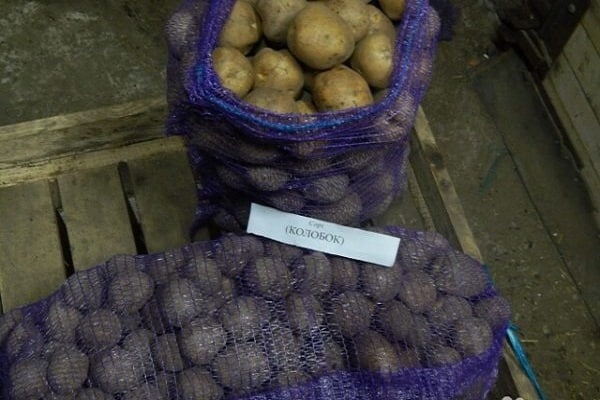
Growing and care features
When ripe, the gingerbread man is fed 2-3 times. At the same time, potash fertilizers alternate with organic matter. Particular attention should be paid to moderation in their number. Excessive fertilization of the soil will lead to the accumulation of nitrates in the tubers.
To retain moisture and prevent the occurrence of bushes, you should spud potatoes... The high soil layer will protect the fruit from greening and pest damage. Hilling is carried out when the bushes reach a height of 20-25 centimeters, and the second time - after 1-2 weeks. During this period, you should also pay attention to watering. It is better to give preference to the drip method. Rain irrigation, as a rule, is used in drought and when potato moths appear on the bushes.
Note! Feed potatoes recommended with organic fertilizers. Chemical dressings negatively affect the taste of potatoes.

A constant lack of moisture can reduce the yield of the variety, so watering should be emphasized. But watering the bushes after flowering is not advisable, since this increases the risk of late blight.
Advantages and disadvantages
The Kolobok variety is a worthy competitor to other varieties, and all thanks to the following advantages:

- good presentation;
- unpretentious care;
- delicate taste of pulp;
- excellent preservation and productivity.
Gingerbread man is a productive variety that responds well to feeding. With proper care from 1 hectare of potatoes, an average of 180% of selected tubers or 256 centners per hectare can be harvested. Potatoes are well stored, so they can be transported over long distances.
The disadvantages include perhaps the rough skin, which makes cleaning difficult, as well as moderate whimsy in feeding. Without it, the harvest will be slightly worse.

Pests and diseases
The potato variety characterized by disease resistance. However, there are some diseases that can affect potatoes. These include late blight and cyst-forming golden nematode. To prevent this from happening, during the period of an epidemic, it is recommended to process the plantings with medicinal preparations.
With regards to pests, Kolobok is affected by Colorado beetles and aphids. The wireworm can also spoil the harvest, which makes moves in the tubers. To avoid this, it is necessary to cultivate the soil before planting. If the pests still appear, the bushes are sprayed with insecticides. They can also be used for prophylaxis before planting potatoes.
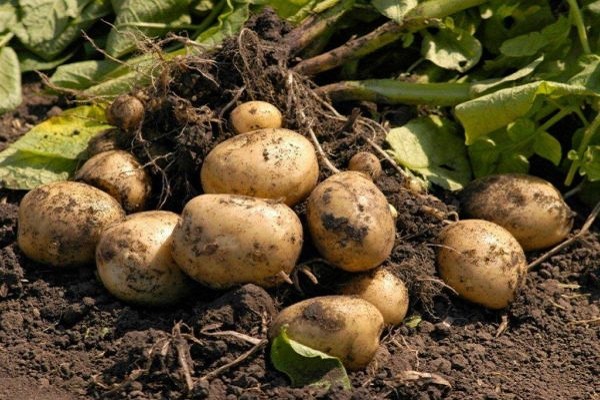
Harvesting and storage
Root crops ripen within 80–85 days. The collection takes place in early-mid September. To speed up ripening, the tubers should be germinated before planting.
Suitable places for storing crops are a cellar, closet, underground or other dark and unheated room. It is better if the potatoes are stored in a wooden container, which has previously been treated with a manganese solution, and then dried well in the air.
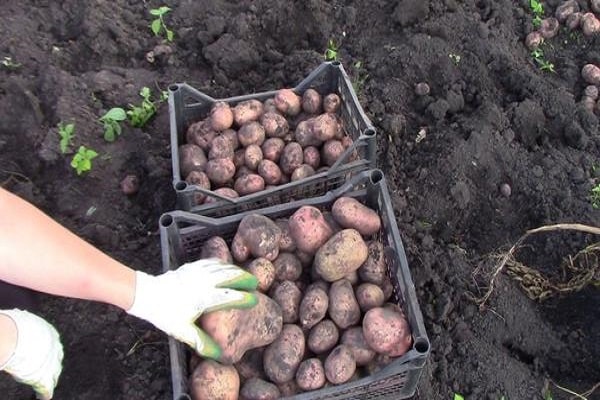
In the room where the crop is stored, vents or hoods should be provided. This will prevent dampness and therefore mold. To prevent root crops from overcooled in winter, they must be kept in a room with good thermal insulation. The best material for this purpose is foam. Roofing material or bitumen can be used for waterproofing.
If the storage conditions are selected correctly, the variety will stay all winter and even longer.
Thus, the description of the potato Kolobok characterizes it as an excellent variety for domestic and industrial cultivation. Resistance to diseases and unpretentious care, will provide high yields in any climatic conditions.

